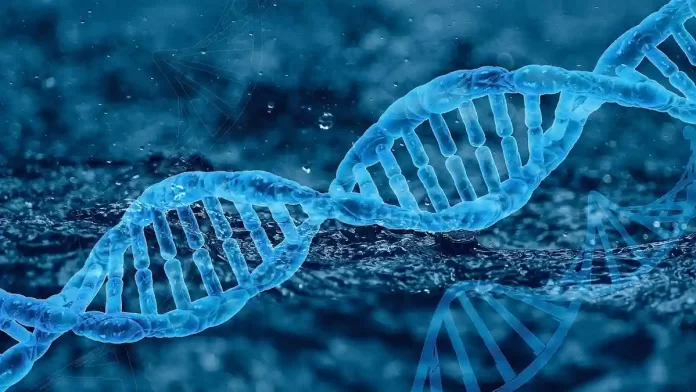In the realm of modern biotechnology, few discoveries have been as revolutionary as the Cas9 protein.
Cas9 protein as a tiny, super-smart molecular tool found in bacteria. It works like a pair of scissors, but instead of cutting paper, it can cut and edit the DNA inside living cells.
DNA is like a blueprint that tells our bodies how to grow and work. With Cas9, scientists can change, fix, or add things to the blueprint in a very precise way.
It’s like having a magic wand that helps scientists study and fix genetic mistakes or create new things in plants, animals, and even humans.
Its groundbreaking potential has opened up new avenues for research, medicine, agriculture, and biotechnology.
This article explores the fascinating world of Cas9 protein, its discovery, mechanism of action, applications, and the ethical considerations surrounding its use.
What is Cas9 Protein?
Cas9 is a powerful and versatile tool derived from the bacterial immune system that enables precise genome editing.
It is an essential component of the CRISPR-Cas system, an adaptive bacterial immune system.
Cas9 acts as a powerful molecular “scissors” capable of cleaving DNA at specific target sites.
Further, it works in conjunction with guide RNA (gRNA) to recognize complementary DNA sequences, enabling precise genome editing.
Its ability to edit genes with unprecedented accuracy and efficiency has revolutionized biotechnology and holds immense promise for advancements in various areas of science and medicine.
Discovery of Cas9 Protein
The story of Cas9 begins with the study of the bacterial immune system, specifically the Clustered Regularly Interspaced Short Palindromic Repeats (CRISPR) system.
In 1987, researchers identified these peculiar repetitive sequences in the genomes of Escherichia coli bacteria but initially dismissed them as “junk DNA.”
However, in 2005, the significance of CRISPR became apparent when it was associated with the ability of bacteria to fend off viral infections.
Understanding the CRISPR-Cas System
The CRISPR-Cas system is a prokaryotic adaptive immune system, allowing bacteria and archaea to memorize and target specific viral or foreign DNA sequences.
CRISPR arrays are comprised of short DNA segments derived from viral genomes, separated by unique spacer sequences.
Cas (CRISPR-associated) proteins play a pivotal role in this defense mechanism.
Role of Cas9 Protein
Cas9, one of the most extensively studied Cas proteins, acts as a molecular “scissors” in the CRISPR-Cas9 system.
It cleaves and modifies specific DNA sequences guided by RNA molecules, known as guide RNAs (gRNAs).
Cas9 uses the gRNA to recognize and bind to complementary target sequences in the genome, initiating a DNA double-strand break (DSB).
Mechanism of Action: Genome Editing with Cas9
Cas9-mediated genome editing involves two main steps:
- Target recognition and
- DNA cleavage.
The guide RNA is designed to complement a specific DNA sequence, guiding Cas9 to the desired location.
Upon binding, Cas9 induces a DSB at the target site. Subsequent cellular repair mechanisms, such as non-homologous end joining (NHEJ) or homology-directed repair (HDR), can introduce genetic alterations, enabling the addition, deletion, or replacement of specific DNA sequences.
Advantages of Cas9 Genome Editing
The Cas9 protein offers several advantages over traditional genome editing techniques.
It is highly versatile and can be easily programmed to target various genes in different organisms.
Additionally, it is cost-effective and relatively straightforward to use, allowing researchers to perform targeted genetic modifications more efficiently than ever before.
Applications of Cas9 Protein
The potential applications of Cas9 protein are vast and have transformative implications across diverse fields:
Medical Research and Therapeutics: Cas9 has opened up new frontiers in understanding genetic diseases and developing potential cures. Researchers are exploring its use in gene therapy to correct or replace faulty genes associated with inherited disorders.
Agricultural Biotechnology: Cas9-based genome editing offers a precise and efficient way to develop crops with improved traits, such as disease resistance, drought tolerance, and increased nutritional value.
Drug Development: Cas9 can be used to engineer cell lines or animal models to study disease mechanisms, identify therapeutic targets, and screen potential drug candidates.
Disease Modeling: Cas9 has enabled the generation of disease-specific cell and animal models, providing valuable insights into disease pathology and accelerating drug discovery.
Bioengineering and Bioproduction: Cas9 facilitates the design of microbial strains for the production of biofuels, pharmaceuticals, and other valuable compounds.
Ethical Considerations and Challenges
Despite its immense potential, the use of Cas9 protein for genome editing raises ethical concerns. Some of the key ethical considerations include:
Germline Editing: The ability to edit germline cells raises ethical dilemmas as genetic alterations can be passed down to future generations, raising questions about the long-term consequences of heritable genetic modifications.
Off-Target Effects: Cas9’s specificity is not absolute, and unintended changes in the genome (off-target effects) can occur, potentially leading to unforeseen consequences.
Informed Consent: The potential use of genome editing in human trials necessitates robust informed consent processes, ensuring that individuals understand the risks and benefits of the procedure.
Equity and Access: There are concerns about unequal access to genome editing technologies, potentially exacerbating existing social and economic disparities.
Conclusion
The Cas9 protein has emerged as a game-changing tool in genome editing, revolutionizing biotechnology and transforming the possibilities of medical research, agriculture, and more.
Its precision, efficiency, and versatility make it an invaluable asset for scientists and researchers worldwide.
However, the ethical implications of Cas9-based genome editing demand careful consideration and responsible use.
As technology continues to advance, the responsible application of Cas9 will shape the future of medicine, biotechnology, and humanity’s relationship with genetic information.
